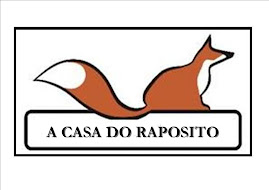 There are no longer any horses at Cabo Touriñan, the man with the twin dogs told me this morning. He spoke in a toothless Gallego but I knew what he said somehow. Someone got too close and was kicked and denounced the owner to the police (at least I think that's what he said, but it could have been because the horses were hobbled: something about the legs or ankles anyway); so one thing I had hoped to find again is no more. There is nothing at Cabo Touriñan now except the smell of the soft turf and the salt and the wind on your skin. Nothing except the lighthouse, and the sapphire waves below. Not even gulls.
There are no longer any horses at Cabo Touriñan, the man with the twin dogs told me this morning. He spoke in a toothless Gallego but I knew what he said somehow. Someone got too close and was kicked and denounced the owner to the police (at least I think that's what he said, but it could have been because the horses were hobbled: something about the legs or ankles anyway); so one thing I had hoped to find again is no more. There is nothing at Cabo Touriñan now except the smell of the soft turf and the salt and the wind on your skin. Nothing except the lighthouse, and the sapphire waves below. Not even gulls.
As for me, I am in love. With Galicia. Deeply, blissfully, joyously, perhaps hopelessly in love. This should come as no surprise either to me or anybody who knows me as every time I have been here (five, six. I don't remember now) I have furthered our relationship. I love the countryside, the fields of corn and pimientos, the woods, the barren wild lands; I love the sea, the long spread of white sandy beaches and the vertiginous heights of the lighthouses on the Costa Da Morte. I love the food, the wine. I love the wild flowing rivers and the slow sedatious ones closing to the sea. I love the music and the dancers in their native costumes so far removed from the idea of "Spain" that most of us have with its flamenco and castanets. None of that here. I love the granite; I love the rich loam which would grow anything and the blue clad ladies who tend their grelos and potatoes. I love the language, Gallego, which each time sounds more familiar. Sometimes I understand it even better than I do "Andalus". I love the people and the fact that when driving you never have Mr. Big with his BMW up your tailpipe, flashing his lights and beeping his horn. People actually stop to let you pass, and if you do this for others, they wave to thank you!
This is unheard of in Malaga, believe me!
This morning I walked the 10 stepping stones across the Rio Castro without slipping or falling in or dropping my camera, though the last part was iffy. I was like the Little Fox in the 64th hexagram of the I Ching: determined to keep my tail above water (so to speak). This year there is a bridge and you no longer have to use the stones. Of course, pilgrims being the purists they are, continue to use the stones although I have been told that in winter this is almost impossible. This makes me wonder what this last part of the Camino - from Finisterre to Muxía or vice versa - would be like to walk in December or January. Even today while trying to follow it as much as I could in the car, I saw no-one.
Yesterday I visited a shrine to Maria Magdalena. Her feast day was last week and it was garlanded with white scarves and flowers and candles. There was no statue only an ancient and probably pagan spring now covered over with a granite roof and gathering in a moss lined pool. I had brought a stone (two actually) from the Cruz de Hierro in the Maragateria near Leon. I wrote two words on it in red marker: one in English and the other in Spanish. The same word. La Magdalena will know what to do with them. The other stone contained more words. I left it on a pilgrim marker by the stepping stones.
Tomorrow I will watch the marisqueros bring the Virgin de la Barxa out of the sea. Perhaps I will send her a reminder too.
All my wishes are now out there for the Universe to consider. Perhaps I am being selfish: but you see, I want it ALL.
More soon, and a photo of the horses at Cabo Touriñan which are no longer...
.









